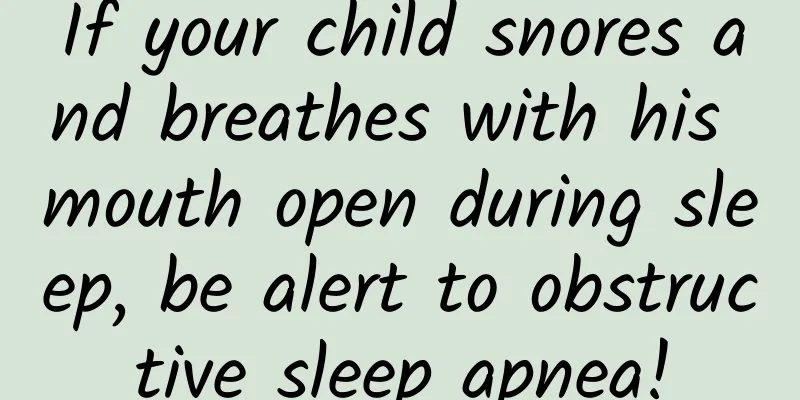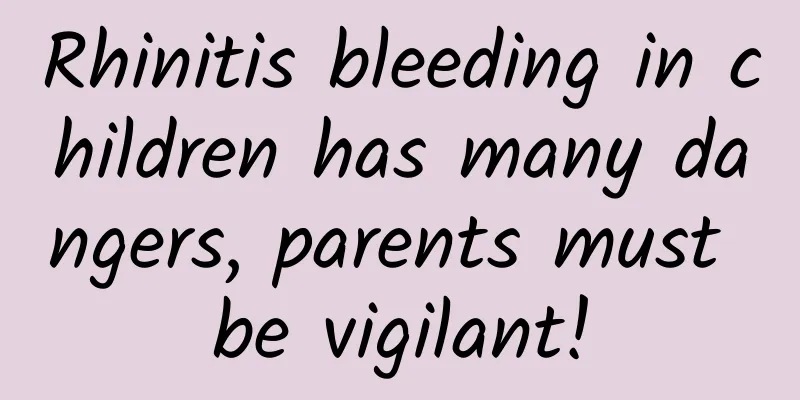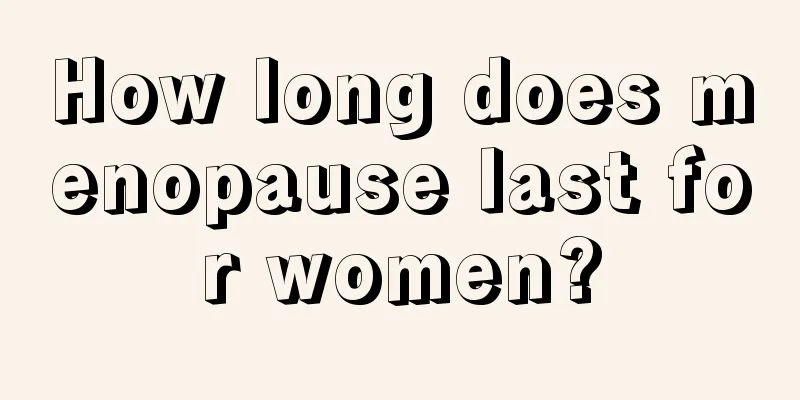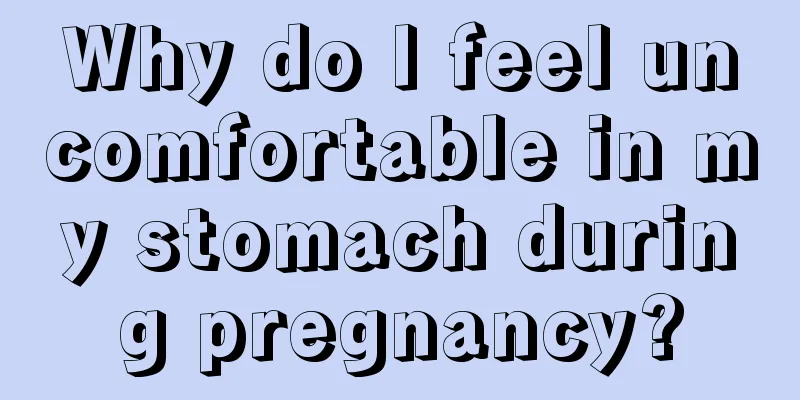If your child snores and breathes with his mouth open during sleep, be alert to obstructive sleep apnea!

|
Author: Chang Li, Chief Physician, Children's Hospital, Capital Institute of Pediatrics Reviewer: Liu Li, Chief Physician, Beijing Children's Hospital, Capital Medical University Obstructive sleep apnea in children refers to the frequent occurrence of partial or complete obstruction of the upper airway during sleep, which affects sleep structure and breathing and leads to a series of pathophysiological changes. At present, the incidence of obstructive sleep apnea in children is relatively high, and it has gradually received attention from doctors and parents, because it can interfere with sleep and breathing, leading to repeated awakenings and hypoxia during sleep, affecting children's growth and development, and in severe cases can cause complications of the cardiovascular system. What factors may cause upper airway obstruction in children? Clinically, the cricoid cartilage is used as the boundary, and the area above it is the upper respiratory tract, including the nose, pharynx, and larynx; the trachea, bronchi at all levels, and lungs are the lower respiratory tract. Figure 1 Original copyright image, no permission to reprint If any part of the upper airway is blocked and airflow is not smooth during breathing, it may cause sleep apnea. Nasal obstruction, common causes include rhinitis, sinusitis, nasal polyps, etc.; nasopharyngeal obstruction, common causes include enlarged tonsils, adenoids, etc.; laryngeal obstruction, such as congenital laryngeal cartilage softening, laryngeal webs, etc.; in addition, congenital upper airway stenosis, craniofacial deformities, fat accumulation, etc. are also causes of upper airway obstruction. Another type of disease is neuromuscular disease, such as spinal muscular atrophy. Children with spinal muscular atrophy will have decreased muscle tone and breathing will be affected, and may experience obstructive hypoventilation or even apnea. Obstructive sleep apnea can occur from newborns to adolescence. The most common causes are enlarged tonsils and adenoids. The most common age is 2-8 years old. The adenoids generally atrophy naturally around 10 years old. Figure 2 Original copyright image, no permission to reprint Children with obstructive sleep apnea have symptoms due to partial or complete obstruction of the upper airway during sleep. The most common symptoms are snoring, mouth breathing during sleep, and sleep apnea. Severe children may also open their mouths during the day or even experience apnea. In simple terms, apnea means that there is a period of time when you don't breathe. The short duration may last for a few seconds, or even tens of seconds. Only then will you take a deep breath. Severe children may even wake up from the suffocation and need to raise their pillows to breathe normally. In addition to the breathing symptoms during sleep, there may be other manifestations, such as dry mouth and headache in the morning, hyperactivity during the day, inattention, and some children may also experience enuresis. Sleep is very important for children's growth and development. For example, growth hormone is mainly secreted during sleep at night. If a child's sleep is often disturbed, it will affect the secretion of growth hormone, and thus affect his growth and development. The main function of breathing is to provide the human body with the oxygen it needs. If the airway is blocked and breathing is difficult, hypoxia may occur. Hypoxia in children with obstructive sleep apnea occurs at night and is a long-term, chronic process, which will affect the child's growth and development, including intellectual development. Therefore, if you find that your child snores, breathes with his mouth open during sleep, has sleep apnea, or has restless sleep, you should seek medical attention immediately. First, check the child's nasal cavity to see if there is rhinitis, nasal polyps, etc.; also check if there is enlarged tonsils and (or) adenoids. Common methods for checking adenoids include nasopharyngeal endoscopy and nasopharyngeal lateral radiographs. Nasopharyngeal endoscopy requires the cooperation of the child. Generally, children over 5 years old can do it. Nasopharyngeal endoscopy can visually observe the size of the adenoids and whether the adenoids block the posterior nasal cavity. It can also check whether the larynx is normal and whether there are any abnormalities in the development of the larynx. However, whether a child can be diagnosed with obstructive sleep apnea in the end requires polysomnography. Sleep apnea monitoring is the gold standard for diagnosing obstructive sleep apnea. It can also distinguish whether the apnea is obstructive or central, and can also distinguish simple snoring. In addition, sleep apnea monitoring can also determine the severity of the disease and guide subsequent treatment, such as conservative treatment or surgical treatment. Polysomnography needs to be done in a special sleep room, which is similar to doing an electrocardiogram and an electroencephalogram. Many leads are connected to the body, but it is not painful or harmful to the child. The child's sleep is monitored through various leads throughout the night. Generally, the total monitoring time is required to be greater than 4-6 hours, so that the child's sleep and breathing conditions can be more realistically reflected. In my country's latest "2020 Children's Obstructive Sleep Apnea Guidelines", the obstructive apnea-hypopnea index is used as the main indicator for judgment. The obstructive apnea-hypopnea index, referred to as OAHI in English, is measured in times/hour. The severity of obstructive sleep apnea is determined based on OAHI. 1<OAHI≤5 is mild; 5<OAHI≤10 is moderate; OAHI>10 is severe. During polysomnography, the child's oral and nasal airflow will be monitored. If the airflow stops (in principle, the amplitude of the airflow decreases by ≥90%), it means that the child is not breathing. If the period of not breathing exceeds two breathing cycles, it is considered apnea. Then, based on the chest and abdominal movements, it is further determined whether the apnea is obstructive, central, or mixed. For children with obstructive sleep apnea, professional doctors will conduct a comprehensive analysis based on the child's symptoms, the duration of the symptoms, and the results of auxiliary examinations such as sleep breathing monitoring to determine a treatment plan, such as conservative treatment or surgical treatment as soon as possible. |
Recommend
I am worried about the side effects of taking aspirin, so I take it for half a month and stop for half a month. Can this prevent the recurrence of cerebral infarction?
A friend told Huazi that he suffered a cerebral i...
Causes of vaginal pain and itching
Nowadays, many women are facing some pain and har...
What to do if a pregnant woman is bitten by a dog
Although dogs are good friends of humans, sometim...
Ovulation bleeding has an odor
Every female friend may encounter the symptom of ...
Can pregnant women use mugwort to fumigate mosquitoes?
Summer is here, and we can't avoid mosquitoes...
Is bone pain caused by cold a postpartum disease? What are the symptoms of postpartum disease?
Postpartum sickness is also known as postpartum w...
What's the best position for a girl's first time?
In ancient my country, women always reserved thei...
A 14-year-old student in Shandong died of anthrax infection! How contagious is it? How to prevent it? The answers are all here
Expert in this article: Dr. Tian Jing, attending ...
Is it normal for one labia minora to be larger than the other?
The labia minora serves as a barrier to protect t...
Will I get pregnant if I have sex three days after my period ends?
Female friends all know that every month with the...
When is the right time to add sugar to steamed buns? What is the use of adding sugar to steamed buns?
We all know that steamed buns are easy to make an...
What if I don't have my period after giving birth?
From the first moment a child comes into this wor...
Can I still have sex after having my uterus removed?
The uterus is the most important part of a woman&...
Second trimester weight loss
After a woman becomes pregnant, the fetus continu...
TCM treatment of dysmenorrhea
Women have menstrual troubles every month, and of...









